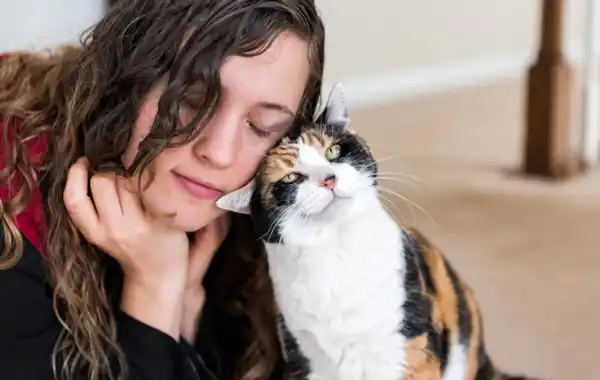Has your cat ever come up to you when you’re sat down after a long day in the office, moved closer to your face, and then literally butt his forehead against your head or cheek? If so, then you’re not on your own.
Most cat owners often describe this behaviour as headbutting, however the correct term for this behaviour is ‘head bunting’. This friendly greeting usually makes owners feel very special, but what is actually happening when a cat does this? What we don’t often realise is that by bunting us in this affectionate way, the cat is actually exchanging scent with us. Cats live in a scent-orientated world, and it’s therefore very important that all family members have a familiar smell.
Cats have scent glands situated on their temples, the corners of their mouths, and at the base of their tails. They use these scent glands to leave a scent mark on objects, and in this case, you! Scent communication is complex, and while cats do use scent to mark their territory, head bunting can also be used to create familiarity and show respect — it’s part of the complex social language of the cat.
You can often see feline friends rub one another with their heads. This not only creates a mutual scent, but also helps with bonding as well. As with cat-to-cat head bunting, it’s a measure of deep trust for your feline companion to put his head so close to you. The bunting is reserved for bonding, social, and friendly purposes.
When your cat engages in head bunting or head rubbing, he is placing his scent there as a social and affectionate gesture. Next time your cat comes face-to-face with you and bunts you, albeit a small bunt or a full-scale headbutt, enjoy it. It’s the next best thing to a kiss on the cheek.







